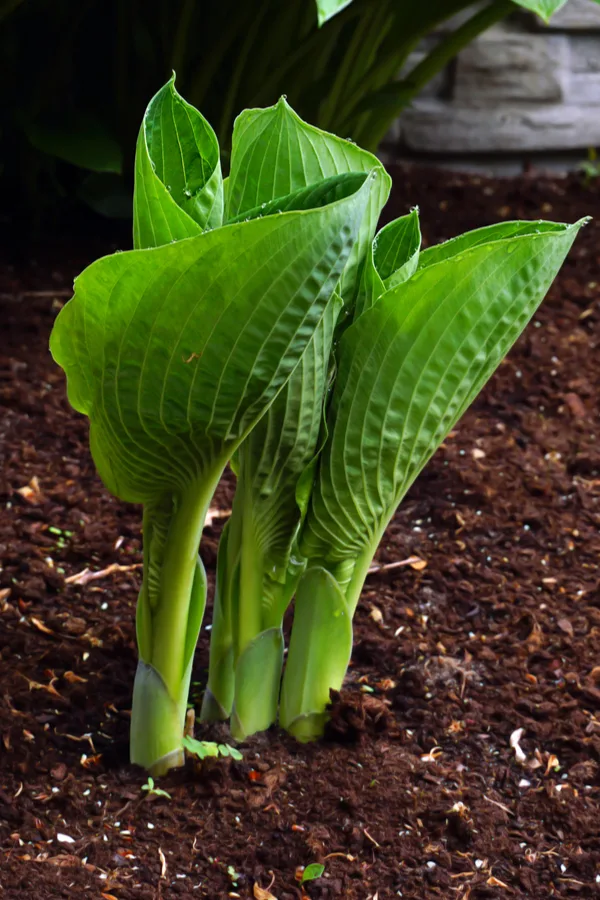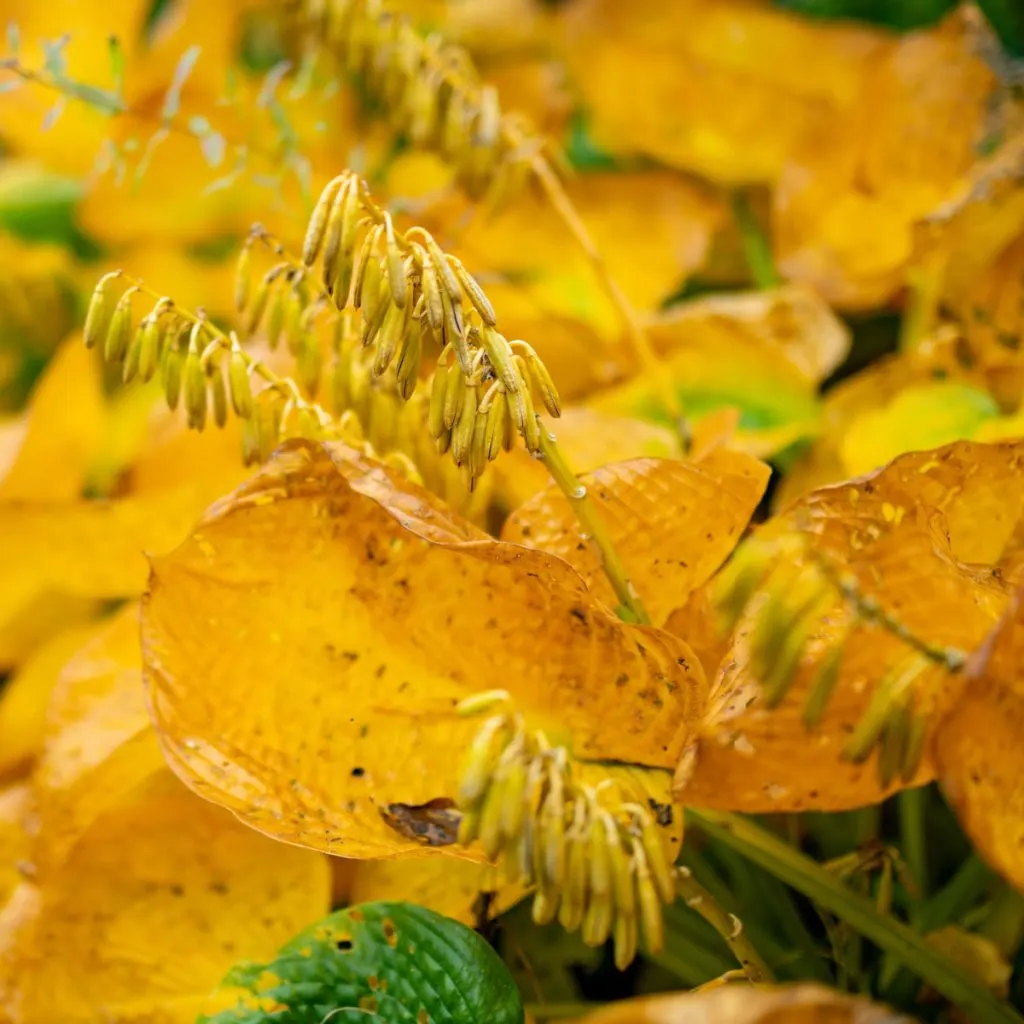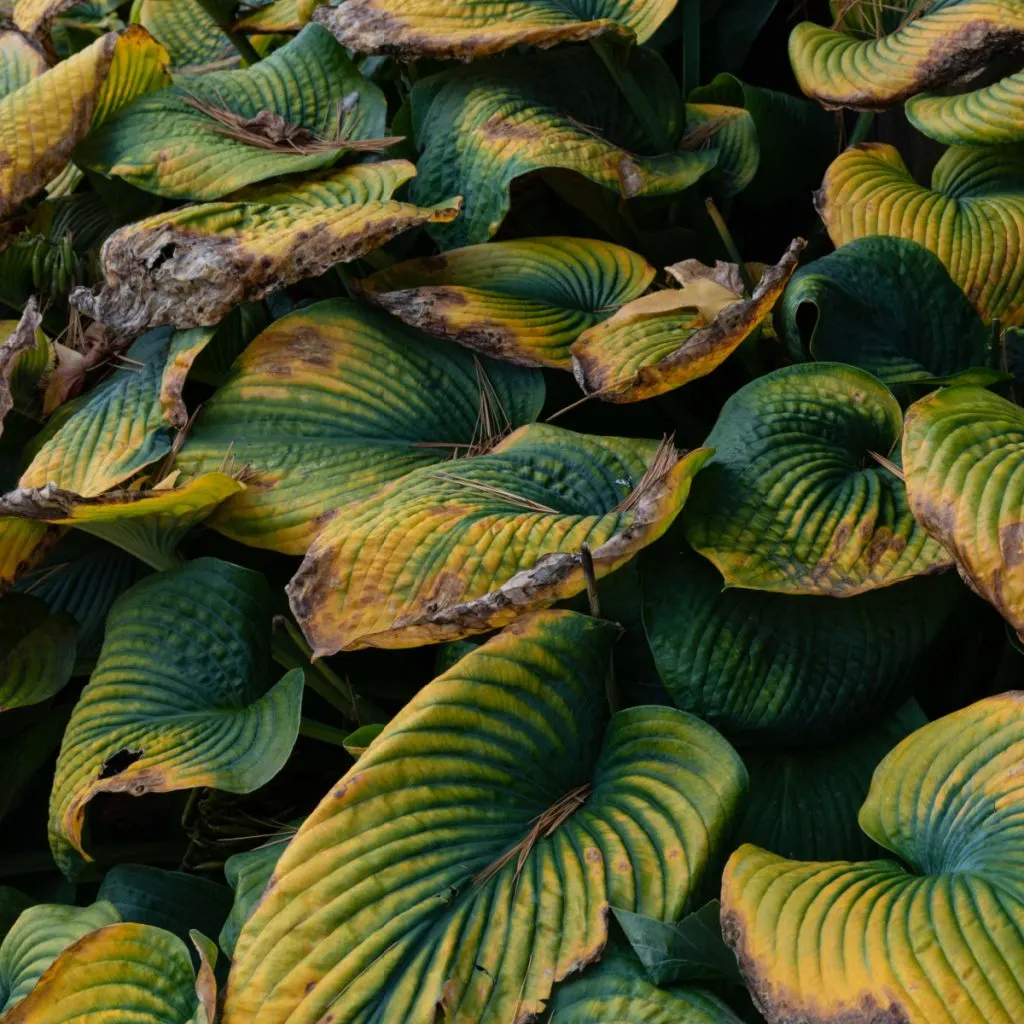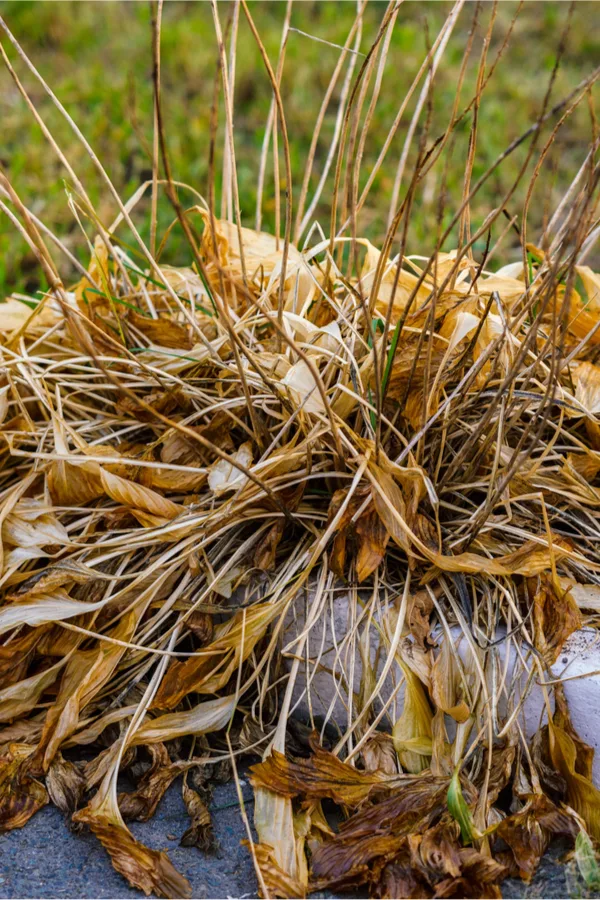Did you know that there are three simple things you can do for your hostas before winter arrives that can set them up for big success next year?
As the cooler temperatures of Autumn arrive, hosta plants begin to show a lot of wear and tear. Leaves that were once bright, green and upright begin to turn to a dull, yellowish-brown. And as they do, their foliage collapses quickly to the ground.
But as they slowly begin to fade, many gardeners question what to do for their plants. Can and should they be cut back in late fall? Is it okay to divide any hostas that have grown too big for their space? And do they need any protection to help them through the winter?
As it turns out, right before winter is actually one of the best times of all to work with your hostas. Not only will it help to clean up and freshen the look of your flowerbeds, it’s also the perfect time to prepare hostas for the coming winter. Even better it can set the stage for them to grow better than ever next spring and summer!
3 Things To Do To Hostas Before Winter
When it comes to fall hosta care, there are three things that you can do that can really set the stage for your plants to stay healthy – and grow even better next spring and summer.
The most important of all three is to cut back & remove the leaf canopy and remaining bloom stems. The second is to divide any oversized plants to keep the plant’s roots from becoming overcrowded. And last but not least, you need to mulch the tops of the plant to help protect them from constantly thawing and freezing over the long, cold winter months.
Here is an in-depth look at each of the three, along with a few extra tips for helping your hostas grow better than ever next year!
#1 Cutting Back Hostas – 3 Things To Do To Hostas Before Winter
One of the most important tasks you can perform for your hostas is to cut them back at the end of the season. Not only will it keep your flowerbeds looking tidy, it also plays a pivotal role in keeping them healthy.
As soon as the foliage begins to die back, cut the hosta down to an inch above the soil line. By doing this, the plant will stop wasting resources on trying to heal dying foliage. Instead, it will begin saving it up for future growth – and bigger blooms!
The longer dying or damaged leaves stay on a plant, the more resources it spends trying to heal it. But once removed, the plant’s roots begin storing that energy for next year.
This is exactly why removing the spent bloom stems of a hosta as soon as they finish flowering during the season is so important – as the plant can then use those resources on keeping the foliage of the hosta healthy and strong until late fall.

Additional Benefits – 3 Things To Do To Hostas Before Winter
In addition to helping the hosta conserve energy, cutting back the old foliage can also play a key role in keeping disease and insects at bay. Both for late fall – and next spring and summer as well.
Spent leaves create excellent cover for a long list of insects. Not only can the dying leaves be a food source for pests, they also provide protection from winter for their eggs. Eggs that then hatch the following spring to become next year’s insect problem!
Finally, all of those decaying leaves can keep the ground underneath moist and damp. That can make the soil and plant base an easy target for mildew and other diseases to develop and grow.
Unfortunately, by leaving all of the old leaves and stems in tact all winter long, both disease and pests can not only survive, but thrive. And by the following spring – both can come back to harm your plants more than ever.
#2 Dividing & Transplanting Overgrown Hostas – 3 Things To Do To Hostas Before Winter
Not only is Autumn a great time to cut back your plants, but it also happens to be the absolute best time to dig up and divide overgrown hostas. Although hosta plants can be divided at nearly any point in the growing season and survive, fall dividing brings with it a slew of advantages for your plants.

For starters, in late fall, it is easy to know which plants have grown a little too large for their space. You can see the size of the plants easily at this point, as well as a few areas of your beds where new transplants can help fill in.
But even more, by dividing in late fall, you set your hosta transplants up for instant success! They can adjust in the soil before winter and then be ready to grow in full come early spring. Unfortunately, if you wait until spring, the plants will lag behind while they re-adjust to the soil.
The end result is a plant that simply doesn’t grow as full and might not bloom in its first season. The same goes for summer dividing since the plants have to regrow their foliage.
The good news is that dividing and transplanting hostas is a breeze. Simply dig the plants up, divide into the size you like, and replant!
Mulching Plants Before Winter Arrives – 3 Things To Do To Hostas Before Winter
Finally, it is extremely important to provide a little protection for your hostas before winter settles in. Especially if you have created new divisions and transplants.
Although hostas are an extremely hardy perennial, they are not immune from winter damage. Crowns left exposed to bare soil are susceptible to all sorts of damage. Damage that can leave them weak – or entirely freeze them out!
The way to provide protection is with mulch. For best results, spread a few inches of compost on top of the crowns. Adding compost to the crowns in the fall not only helps protect them, it also will provide them with a low and slow nutrient feeding in the early spring as they come out. Product Link: Bagged Compost
Once the compost is in place, finish by topping off your plants with a few inches of mulch. The mulch will help hold the compost in place, and provide extra protection throughout the winter months.
A Few Final Care Tips – How To Care For Hosta Plants Before Winter Arrives
If you divided a few of your hostas into new plants, it’s a good idea to water them a few times in late fall if experiencing a dry spell. Although the hostas are heading into dormancy, the water will help keep the crowns moist as they re-adjust to the soil and set roots.
Last but not least, the question of fall fertilizing often comes up with hostas and other perennials. Beyond covering with a bit of compost / mulch for winter protection, fertilizing should be avoided in the fall.
Unfortunately, fertilizing late in the fall can spur unwanted late season growth that is both fragile and weak. Not just above the soil if the plant tries to produce new leaves, but tender root growth as well. Instead, wait until early spring to apply fertilizer.
Reading this closer to Spring? Take a look at our article: How To Revive Your Hostas Before Spring – Get Your Hostas Ready To Grow!
For more on fall perennial care, check out our article: How To Prepare Flowerbeds For Winter – 3 Must Do Chores To Do Before Winter Arrives!
Here is to getting your hostas ready for winter and a great next year! Happy Gardening, Jim & Mary.
Old World Garden
Jim and Mary Competti have been writing gardening, DIY and recipe articles and books for over 15 years from their 46 acre Ohio farm. The two are frequent speakers on all things gardening and love to travel in their spare time.
As always, feel free to email us at thefarm@owgarden.com with comments, questions, or to simply say hello! You can sign up for our free email list in the subscribe now box in the middle of this article. Follow us on Facebook here : OWG Facebook. This article may contain affiliate links.



